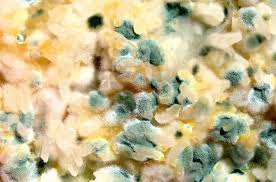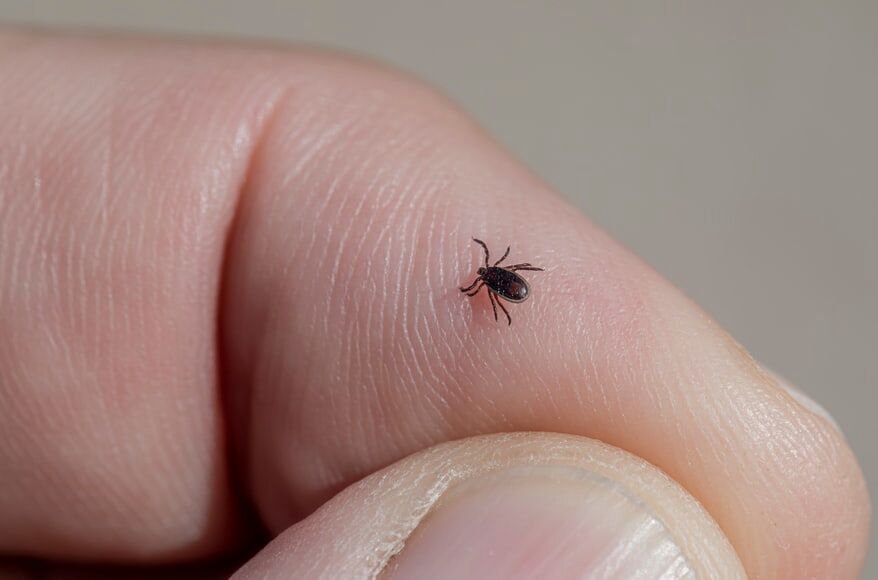The Growing Threat of Lyme Disease: Why Is It On The Rise?

In this blog, we will look at Lyme Disease and the growing threat that it has become. You will learn:
- What Lyme Disease is
- How Lyme Disease is spread
- Why & How Lyme Disease has become an increasing threat to our health
Do you know what Lyme Disease is and how it spreads? Do you know why Lyme Disease is becoming increasingly common? If you want to know more about this growing threat and how to best optimize the health of your clients, then this blog is for you. Please read on for answers!
** Please note: If you want the longer, more detailed version of this article, then please click here **
What is Lyme Disease (LD)?
Lyme Disease is a tick-borne illness. It is caused by the bacteria Borrelia burgdorferi and is transmitted through the bite of infected blacklegged ticks. It has many different symptoms and can present in many ways. Typical symptoms include fever, headache, fatigue and a bull’s-eye skin rash.
We have written extensively about Lyme Disease in our blogs. Please start here with some definitions of Lyme and continue reading through our blog for tons of information on Lyme Disease. In our clinic, we are experts at diagnosing and treating Lyme.
How is Lyme Disease Spread?
Lyme Disease is the most common vector-borne disease in the US (Boulanger N, 2019). Vectors are insects such as mosquitoes, ticks and fleas that spread pathogens. We have all been bitten by a mosquito, tick or flea. If you get bitten by a vector and get sick, you get a vector-borne disease (VBD). Some vector-borne diseases, like the plague, have been around for thousands of years (CDC, 2022).
Most vector-borne diseases are transmitted by ticks. Transmission of Lyme is primarily through a tick bite (CDC, 2020):
- Transmission via pets can happen. Dogs and cats can carry infected ticks and get Lyme Disease. These ticks can then spread from the pet to human owners.
- No research currently supports that Lyme Disease can spread via interpersonal contact such as touching, kissing or having sex with a Lyme-infected person. This does not mean that it does not spread in this manner, but research has not been able to show that it does.
- Lyme can spread from a pregnant mother to the unborn fetus. This is considered rare in research. However, there are issues with how Lyme is diagnosed and difference in interpretation of who has Lyme and whether Lyme becomes chronic that may impact this significantly. From the perspective of many Lyme Literate doctors, this occurs more frequently than the research community is able to validate a present. This may change if more liberal interpretation guidelines can be agreed upon in the future.
- Borrelia, the Lyme bacteria, can live in the blood, but no known cases of Lyme have been linked to blood transfusion.
- Research suggests that you cannot get Lyme Disease from eating venison.
How Do Ticks Transmit Lyme Disease?
Ticks can’t fly or jump. They get onto human or animal hosts by ‘questing’ (CDC, 2020). They sit on the tips of grasses and bushes, and hang onto leaves or grass by their lower legs. They stretch their upper legs out and wait for a human or animal host to pass by. When a host passes the waiting tick, it climbs onto the host. This is questing. Blacklegged ticks have many possible hosts; mammals, birds, reptiles and amphibians (CDC, 2020).
Ticks can attach to any part of the body. They are usually found in hard-to-see places on the body such as the groin, armpits and scalp. Typically, the tick has be attached for 36 – 48 hours before Lyme Disease can be transmitted. But it can happen in as short a time as 5 hours.
Adult ticks are approximately the size of a sesame seed and nymphal or immature ticks are the size of a poppy seed (CDC, 2020). They feed in warmer weather, in the spring and summer months. The larger adult ticks are more likely to be discovered and removed before they have had time to transmit Lyme bacteria. Adult ticks are most active during cooler months (CDC, 2020).
Deer are a common host for ticks. Deer do not get Lyme Disease because their immune system can kill Borrelia, the Lyme bacteria. Deer contribute to and maintain large populations of ticks in the environment because they are the favorite host for adult ticks (Boulanger N, 2019).
How is Lyme Disease Transmitted Globally?
Vector-borne diseases transmitted by ticks have been on the rise and Lyme’s reach is increasing globally. A global meta-analysis (study of studies) of 89 studies including 158,287 participants demonstrated a prevalence of Borrelia burgdorferi (the Lyme disease organism) of 14.5% or more than 1 in every 7 people in the world (Dong Y, 2022). This is an alarmingly high rate. The spread is due to demographic and environmental factors. Climate change and human activity and development are the key causes. Lyme Disease in North America is now quite widespread, after increasing steadily over the last 30 years (Radolf JD, 2021).
Ticks and Lyme transmission have historically been linked only to forest areas. But Lyme can now even be found in urban areas such as New York City and Chicago! (Radolf JD, 2021). Lyme has spread outside the US to Southern Canada, which was previously too cold for ticks (Radolf JD, 2021).
These environmental drivers which increase Borrelia-infected ticks in the wild and increase human interaction with infected ticks are (Radolf JD, 2021):
- The expansion of tick habitats due to climate changes
- The broader distribution of infected Lyme-carrying ticks by migratory birds
- Increased deer populations upon which ticks feed and mate
- More territory for tick populations as lands cleared for agriculture become reforested
- Increased incursion of humans into natural habitats where ticks live impacts forest ecosystems and wild life (Radolf JD, 2021).
To Read About Blog Topic, Scroll Down
Want To Work With Our Clinic?
Do you have a chronic or mystery illness that no one has been able to help you with? Are you simply wanting to re-connect with a healthier version of yourself? It’s Time To Finally Feel Better!
Is Lyme Disease Viral or Bacterial?
Ticks can transmit many infectious agents (Boulanger N, 2019):
- Bacteria: Examples are the Lyme Disease bacteria Borrelia burgdorferi, Borrelia mayonii, Anaplasma and others
- Viruses: Tick-borne encephalitis
- Parasites: Babesia and Theileria
Lyme Disease itself is bacterial and not a virus (Boulanger N, 2019). Lyme bacteria can go dormant and then get re-activated.
The Borrelia burgdorferi bacteria can adapt and survive in a hostile environment in the host human body. It can become and continue to live in the body (Rudenko N, 2019). These dormant Lyme bacteria can reactivate at a later time.
Bacteria can also go into a different type of dormant state known as persistence. In this state, the bacterial cells continue to live and can survive exposure to antimicrobial treatment (Cohen NR, 2013). Antimicrobials are antibiotic drugs or other antimicrobial agent like herbs and plants that we use to kill microbes like bacteria. Exposure to antimicrobials prompts the bacteria to go into persistence and they become persister cells.
These cells then revive when the stress is removed, i.e., when the antimicrobial treatment ends. They can quickly revive themselves in response to external signals, such as nutrient availability (Song S, 2020). Persister bacterial cells are the probable cause of recurring infections like tuberculosis, cystic fibrosis and Lyme Disease. (Song S, 2020).
Lyme bacteria can evade the immune response and remain dormant or in persistence in humans for weeks, months or even years (Colombia Univ., 2022).
Whilst the threat of getting bitten by a tick and getting Lyme Disease has definitely increased in recent years, we also know more about Lyme Disease treatment. There are Lyme-literate doctors who can help you with the identification and diagnosis, and subsequent treatment of Lyme.
Summary
- Lyme Disease is primarily transmitted through tick bites. Ticks can attach to humans and transmit the bacterial infection that causes Lyme.
- Lyme Disease is becoming increasingly common. The region in which ticks with Lyme Disease are found is growing in size. It is estimated that 1 in 7 people worldwide test positive for Lyme on blood tests.
- The reasons for this are global warming, allowing ticks to live longer and be active for longer. People are developing and encroaching more upon nature which is where ticks live. Suburban development often intrudes upon animal territory, bringing people, ticks and bacteria into contact. Deer are the main host for ticks to live on and deer populations are growing.
- Lyme Disease is a bacterial infection, but ticks can carry other dangerous microbes that cause disease. Some of these are viral and some are parasites.
- The threat of Lyme Disease has increased in recent years. But knowledge about how to successfully treat Lyme Disease has also increased.
- It is best to catch Lyme Disease as early as possible and to see a Lyme-literate doctor. See a Functional Medicine doctor if you suspect you have been bitten by a tick or have unexplained symptoms.
In our clinic, we are Lyme-literate doctors. We are experts at identifying root causes, diagnosing conditions like chronic Lyme Disease and helping people to address the root causes of illness and improve their health. We treat Lyme Disease and post-Lyme chronic symptoms, with both natural and pharmaceutical approaches, depending on the individual case.
** Please stay tuned for our next Blog! **
As always, please get in touch with us. Book a free health evaluation call with us today, to see how we can help you with your concerns. We can answer your questions and help you book an initial consult with one of the functional medicine doctors in our clinic.
References
CDC. (2022). Understanding Lyme and Other Tickborne Diseases.
Cohen NR, L. M. (2013). Microbial persistence and the road to drug resistance. Cell Host Microbe.
Colombia Univ. (2022). Lyme Disease.
LYME SCI: Tick-borne co-infections are the rule, not the exception.
Madison-Antenucci S, K. L. (2020). Emerging Tick-Borne Diseases. Clinical Microbiology Reviews.
Radolf JD, S. K. (2021). Lyme Disease in Humans. Curr Issues Mol Biol.
Are You Suffering From A Chronic Illness?
Does your current health situation look like this…
- Do you feel that you have tried many things and either nothing works, or the treatment does not hold?
- Have you been told that there is nothing that can be done to reverse your illness and you just need to manage symptoms?
- Does your illness impact your work, your family, your happiness and your social life?
We specialize in finding answers and solutions for complicated chronic illness when people feel like they have tried everything. If this sounds like you, book a free call with us to see if we are the right fit for your health goals.
Dr. Miles has spoken for the following organizations:

















